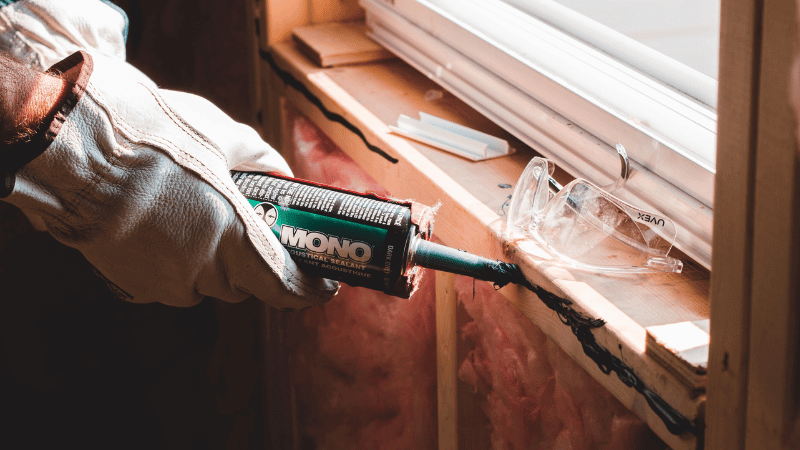Categories
How to Use Bridging Finance to Buy, Refurbish and Sell a House

If done correctly, property flipping can provide healthy returns. If you've found a 'fixer-upper,' you could use bridging finance to refurbish and sell it.
Unless you have a significant amount of cash at your disposal, you will likely need to borrow finance to fund the purchase and renovation work you need to do. Many property developers use refurbishment bridging loans to complete their development projects.
Key Takeaways
Bridging finance is renowned for its quick turnaround and funding processes, which can be advantageous in both the purchase and renovation of a property:
- Bridging finance can be approved in a matter of weeks, allowing you to take advantage of time-sensitive investments, such as auction properties. Overall, bridging finance can empower you to act quickly, which is more challenging if you want to take out a mortgage.
- The process of purchasing a property, renovating it and preparing it for resale can take between 6-12 months, depending on the market and your experience. Bridging finance is designed to be paid back within 12 months, so it can function as an injection of funds that can be repaid once the property has been sold.
- Bridging finance often comes with more flexible repayment terms compared to traditional mortgages. This flexibility can be beneficial for individuals who plan to sell the property quickly after renovation, as they may be able to repay the loan without incurring early repayment penalties.
See similar: Home Improvement Loans- The 7 Best Options
Try Our Bridging Finance Calculator
Get started with our calculator
In this guide:
Limitations of High Street Lenders
Why Use Refurbishment Bridging Finance?
What are the Property Refurbishment Loan Lending Criteria?
Will You Need a Light or Heavy Refurbishment Loan?
How to Apply for a Refurbishment Loan Today
The Limitations of High Street Lenders
In most cases, traditional lenders, such as high street banks, cannot provide the fastest and most straightforward means of obtaining funding.
Although you may think that approaching a traditional lender for finance is your best option, you will likely come across the following pitfalls:

Rigid financial products
Traditional lenders offer a limited number of financial products geared towards only a handful of circumstances.
Their loan products are well-suited to long-term projects such as residential mortgages but rarely cater to short-term finance requirements. Therefore, traditional lenders may not be able to get the right finance for your development.

Fergus Allen
Head of Bridging
One of the main attractions of bridging loans is being able to act like a cash buyer in the property market.
You have the speed and flexibility to snap up a desirable opportunity, where it would be too slow to sell your house first or put a traditional mortgage in place.

Limited property types
Buying a rundown property at a low price and upgrading it to a standard that would attract much higher offers is a popular way for developers to maximise profits.
Developers often find properties at auction under market value, which can help them save a significant amount of money on their development projects.
These properties can often be in such bad condition that they are deemed unmortgageable by traditional lenders who refuse to provide financing for them.
In many cases, this is due to issues or risks present in the property that make the building uninhabitable.
Identifying which properties a traditional lender sees as high risk and deems unmortgageable is essential. Traditional lenders will usually classify the following as unmortgageable properties:
- Valued under £50,000
- With structural issues
- Without a kitchen or bathroom
- In a derelict condition
If a property you have your eye on fits into the criteria above, it is likely that a traditional lender will not provide the finance you need.
It would help if you also remembered that traditional lenders set a cap on the number of properties you can have when applying for a loan. This may restrict your borrowing options if you own multiple properties.

In-depth portfolio review...
Most traditional lenders conduct an in-depth review of an applicant's property portfolio to ensure that the applicant has a history of successful developments.
The review will also examine the applicant's financial situation. This is to determine whether the applicant can repay the loan.
Therefore, if you do not have the necessary experience, your portfolio is not as strong as the lender would like, or the lender is not satisfied that you can afford the loan repayments, your application may not be successful.

Lengthy application process...
It is not uncommon for applications with a traditional lender to take up to several weeks or even months to process.
A delay of that length could not only have significant ramifications on your development timeline, but it could mean you lose out on the property you intend to purchase to another buyer.
To minimise the chance of experiencing a delay, you may want to look to another lender to secure your finance.
Why Use Refurbishment Bridging Finance?
Refurbishment bridging finance is a type of loan that is designed specifically for short-term usage. A refurbishment loan can provide a substantial amount of finance within a short timeframe and can 'bridge' the gap when there is a shortfall in funding.
Refurbishment loans are becoming increasingly popular with developers, as they often have attractive features that lend themselves to property development.
Related: Short Term Loans for Flipping Houses

Refurbishment loans give you access to significant funds
Refurbishment bridging finance can provide developers with a way to get substantial funding for their developments.
Some lenders we work with are willing to grant refurbishment bridging finance from £50,000 to £25 million.
Of course, the amount you can access will depend on your circumstances and financial position.

Refurbishment bridging finance comes with flexible interest payments
Regulated bridging finance typically comes with the option to 'roll up' the interest you pay at the end of the loan term instead of monthly.
The ability to roll-up interest for the end of the loan could be attractive, as it could minimise the amount you have to pay each month, and you could have more capital available for your development.

Refurbishment loans come with flexible terms
Unlike traditional lenders, specialist lenders that offer home improvement loans gear their finance towards short-term projects. Refurbishment loan lenders often provide financing terms between 3 and 24 months.
The short terms of finance lend themselves to property development, as you can access a significant amount of finance without locking yourself into a long-term loan agreement.
Traditional lenders usually charge early repayment penalties if a loan is fully repaid before the agreed deadline, whereas refurbishment loan lenders rarely charge early repayment penalties.
This means that if you finish your development earlier than expected, you will not be penalised for repaying the loan before the end of the term of finance.
Related: Home Improvements That Add the Most Value
What are the Criteria for Refurbishment Bridging Finance?
A strong exit plan is the primary requirement lenders look for when considering a refurbishment loan application.
Your exit plan is the strategy you will use to repay the loan at the end of the loan term,for example, using the proceeds of the sale of your property to repay the loan once the development is complete. Or you can refinance through a residential or buy-to-let mortgage.
- Eligibility: secured on assets, individuals, companies and SPVs
- Credit history: no credit and bad credit is usually not a problem
- Loan to Value (LTV): maximum 75% (100% with additional security)
- Loan term: 3-36 months
- Loan amount: £50,000 up to £25m
- Interest options: rolled up, retained or serviced
- An immediate decision in principle
- Completion: in under two weeks
- Exit: sale or refinance
If you have any questions about your eligibility for bridging finance, speak to one of our bridging advisors, who will be happy to discuss your situation.
Bridging loan advice can give you peace of mind that you're taking out the right loan for your needs at the right price and with no hidden fees.
Discover how we've helped hundreds of our clients secure bridging finance to flip a property:
What Fees Does Refurbishment Bridging Finance Have?
Arrangement Fee
Charged by the lender for setting up the loan, this fee is typically a percentage of the loan amount and can range from 1% to 2% or more. It is often deducted from the loan proceeds.
Valuation Fee
The cost of a property valuation is typically borne by the borrower. Lenders may require a professional survey to assess the property's value before approving the loan.
Broker Fees
If you use a broker to help you find suitable bridging finance, there may be broker fees involved. These fees can be paid by the borrower, the lender, or a combination of both.
Admin Fees
Lenders may charge administrative fees to cover the expenses of processing the loan application and managing the loan throughout its term.
Will You Need a Light or Heavy Refurbishment Bridging Loan?
Light refurbishment loan
Light refurbishments will cost under 15% of the property's value and are focussed on aesthetic improvements such as painting, installing a new kitchen or central heating system, or replastering.
Heavy refurbishment loan
In most cases, heavy renovations will cost more than 15% of the property's value. Planning permission may be needed for structural work, as well as adhering to building regulations. Examples include extensions and loft conversions.
Use our refurbishment bridging loan calculator below to determine how much you could borrow for your renovation project.
How to Apply for Refurbishment Bridging Finance
High street banks no longer offer bridging finance in the UK. If you plan on taking out refurbishment bridging finance, you'll need to source one from a specialist lender.
Private and specialist lenders typically use finance brokers to find clients, but they are not as easy to find or access as high street lenders. An experienced broker will have an in-depth experience of the market and can connect you with the most suitable lender for your circumstances.
At Clifton Private Finance, we have an award-winning bridging team, and we can get the best rates on the market. If you have found a property you wish to purchase, develop and sell, we can get the best finance to meet your needs.
We have strong relationships with lenders offering both light and heavy refurbishment bridging finance and will be able to secure the best financial solution for you. We can guide you through your options and source finance as quickly as possible.
To discuss your options, call us at 0203 900 3040 or book a consultation below:















